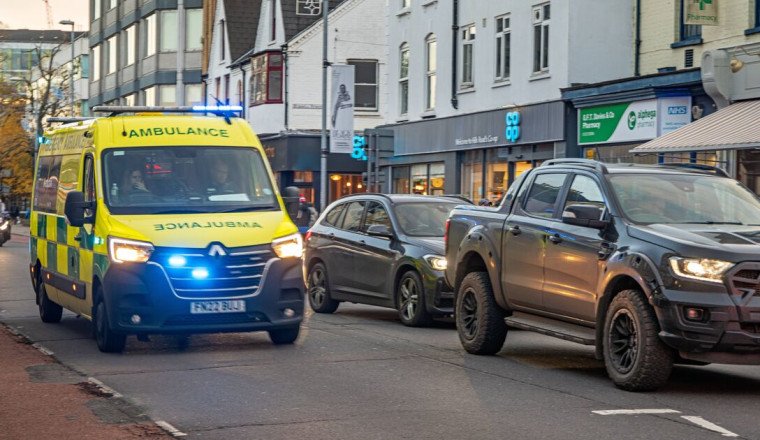
Emergency services, including ambulances, often need to reach their destinations as quickly as possible. So when motorists see the blue lights flashing and hear the sirens, they understand the need to promptly get out of the way.
Every minute counts in an emergency situation, but safety is paramount. In the rush to help emergency vehicles get through quickly, it can be all too easy for drivers to panic, especially if on a narrow street or if the road is lined with parked cars.
It can be challenging for motorists to make way for ambulances or fire engines on congested roads, but it's crucial that drivers remain calm and ensure they can move their vehicle safely. This not only minimises the risk of accidents but also avoids potential fines.
Incorrectly moving out of the way of an ambulance could result in a fine of up to £1,000. The Highway Code says motorists should give way to vehicles with flashing lights, including police cars, fire engines, ambulances and emergency doctors.
But if you break the law while doing so, for example by entering a yellow box junction or a bus lane, or by driving through a red light, you could be hit with a fine.
On top of this, certain offences can also add three penalty points to your driving licence.
The Highway Code clearly states: "You should look and listen for ambulances, fire engines, police, doctors or other emergency vehicles using flashing blue, red or green lights and sirens, or flashing headlights, or traffic officer and incident support vehicles using flashing amber lights."
The code says drivers should stop before the brow of a hill, never mount the kerb, avoid putting anyone else in danger and to not brake harshly.
Further guidance on the Blue Light Aware website reads: "Of course, there will be times when there simply is no room for an emergency service vehicle to get past, or perhaps its crew are activated by their control room to respond to an emergency while they are waiting with everyone else at the traffic lights.
“On these occasions, they know that other motorists are not allowed to ‘jump’ the red light, and the emergency vehicle would ideally not activate its sirens and lights until it was safe for the vehicle in front to cross the solid white line at the junction.
“On the (hopefully) rare occasions that a blue light vehicle, in 'emergency mode', is sitting behind another vehicle at a red traffic light, it’s important to appreciate that it would be both very dangerous and illegal for the other vehicle to move across the solid white line."















Facebook Conversations